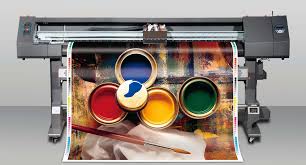Understanding software differences WRT sizing
Every single one softwares, including PhotoShop and Qimage must work contained by the boundaries of the printer which are identified by the driver. If you have a specify and out of the question errand, another software might operate the demand in a different way. For instance, when you did not stipulate a borderless printing, the greatest extent size print permissible on 16×20 paper by means of the Epson 4800 is 15.766 x 19.333 inches.
When you attempt to print a 16×20 with PhotoShop, you will be informed that the print size is larger than authorized however you will be given a “Proceed” alternative. When you proceed, PhotoShop will print a 16×20 although it will clip the edges of the file and what you’ll end up with is a 15.766 x 19.333 inch turn out that has the edges gone. When you utilize Qimage, a pop up will inform you that the print size is bigger than one page and you will be enquired if you want a poster. When you give a negative response, you’ll have a 15.766 x 19.333 inch print (similar as PhotoShop) save for the edges being cropped off.
These are merely two dissimilar ways of managing the similar dilemma moreover in both case, the printer will have a 15.766 x 19.333 inch print: a printer/driver restriction. It is imperative to be familiar with how different programs operate sizing responsibilities and in particular, what comes to pass when you attempt to print sizes that does not match on the paper. No matter what printing software you bring into play. Be custom with how it operates sizing discrepancies.
Spooling Options
A Qimage will almost always send more (potentially much more) data to the driver than PhotoShop or other printing programs due to Qimage’s interpolation procedure. At the same time, you have to make certain that the printer is arranged up correctly for large format photo printing. Not having the printer/spooler set-up as it should be may result in incomplete prints, no print at entirely, or failure due to the system not being capable to operate the amount of data being passed to the driver.
Initially, open the control panel, click “printers and faxes”, and then right click on the printer. Pick “Properties” from the right click menu then click the “Advanced” tab. If “Enable Advanced Printing Features” is checked at the bottom, Uncheck this specific choice. This is the reason for 98% of printing difficulty when printing large format as this feature can only handle a small amount of data and isn’t meant for photographic printing so the option should remain unchecked.
The former options on that tab as a rule make little difference but I recommend checking “Spool print documents so program finishes printing faster” and also “Start printing immediately”. Those alternatives will guarantee the best use of resources on the machine. Finally, click the “Print Processor” button and make sure that the right side is set to “RAW”. If any other data file is selected, it is probable that your photographic printing will not work properly. Click “OK” to save the changes.
Use the above table as a good rule of thumb for printing prints larger than 20×30 inches to circumvent system overload. Below 20×30 inches: just keep the interpolation levels set to “Max”. While there should be no problem printing at “Max” interpolation level in Qimage well beyond this arbitrary 20×30 size on a competent device, it will prolonged the process and will increase the strain on the entire system (particularly with respect to hard drive space).


No comments:
Post a Comment